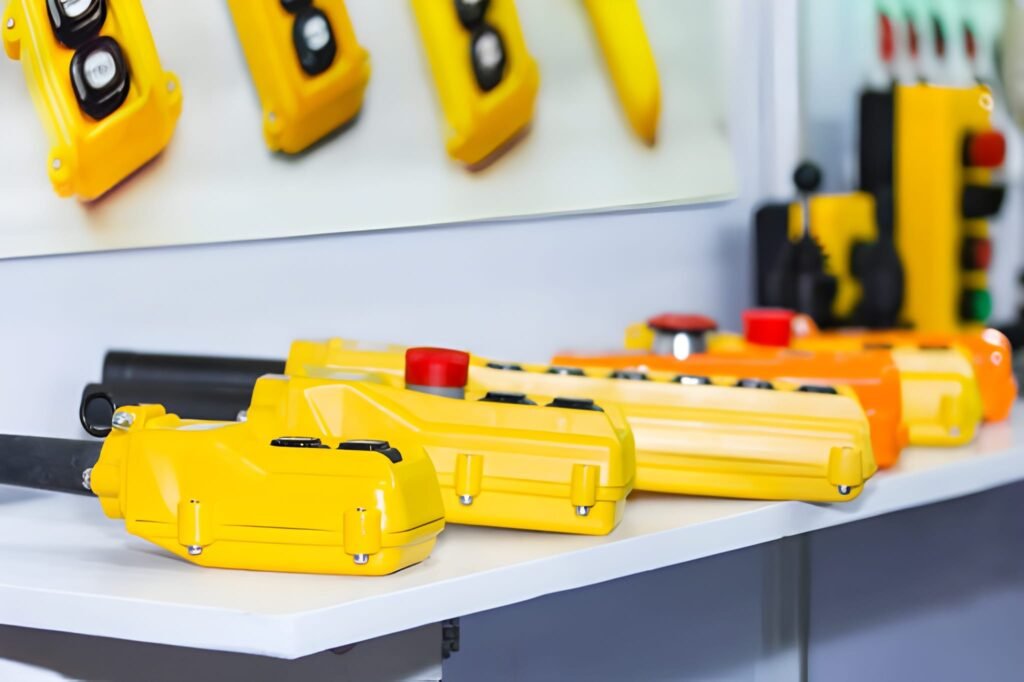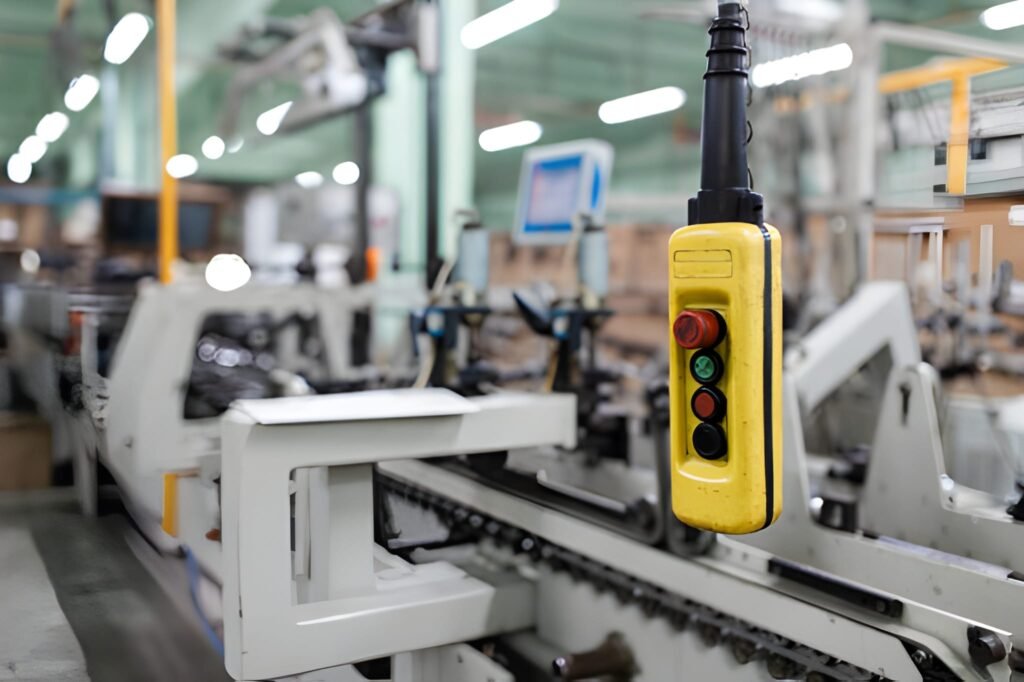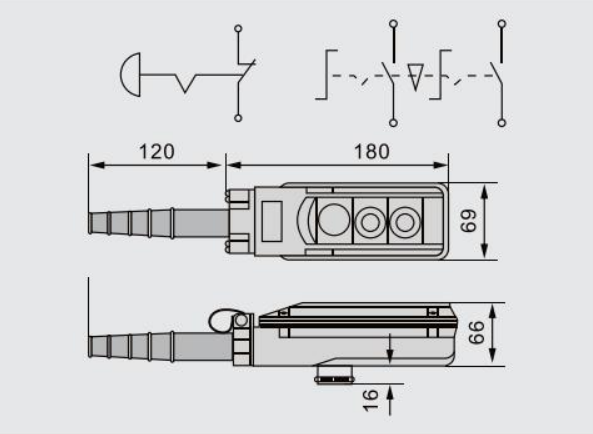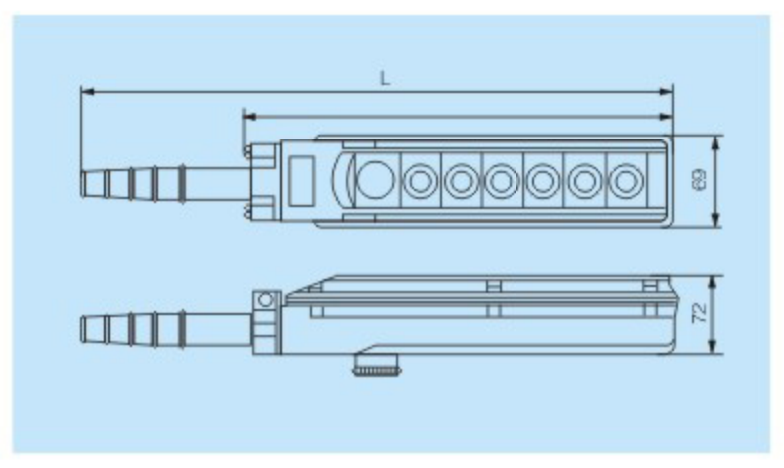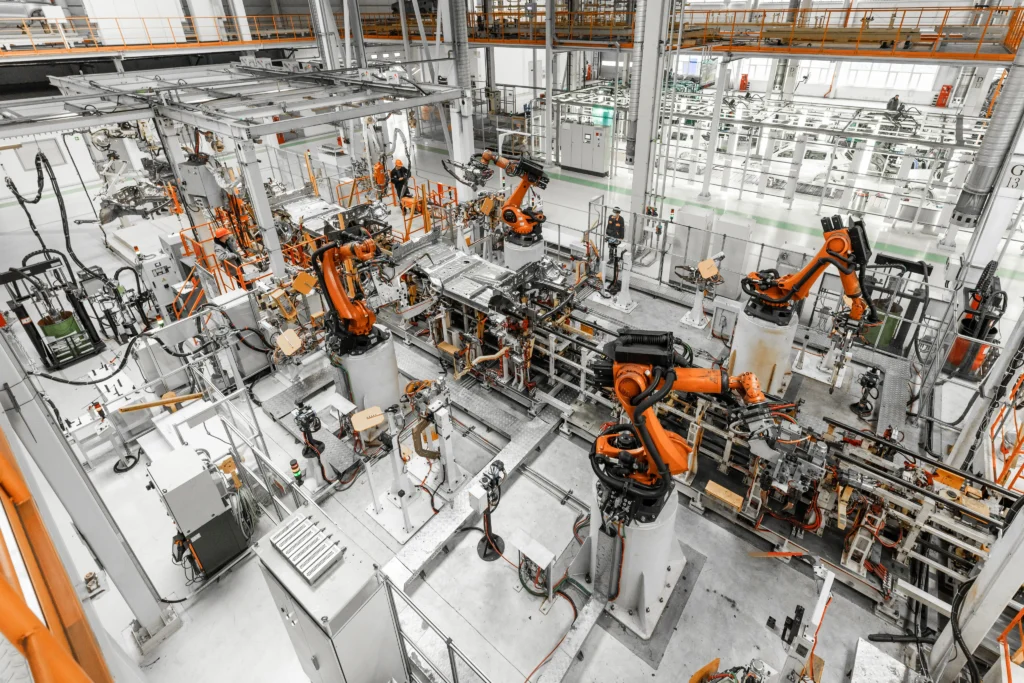とは何か? ペンダント・コントロール・ステーション
アップタイムが重要な世界では、ペンダント・コントロール・ステーションは、リフティング、マテリアルハンドリング、または自動化プロセスを扱うあらゆる施設にとって実用的な投資です。このガイドでは、ペンダント・コントロール・ステーションとは何か、なぜそれが重要なのか、そしてどのようにお客様のニーズに合ったモデルを選べばよいのか、また簡単に注文や見積もりを依頼する方法について説明します。ご検討の準備はお済みですか?さっそく見てみましょう。
ペンダント・コントロール・ステーションとは? A COB-61C ペンダント・コントロール・ステーションは、スイッチ、押しボタン、またはジョイスティックを内蔵したハンドヘルドのコントロール・ユニットです。PLCやリレーネットワークなど、機械のコントローラに信号を送り、スタート、ストップ、リバース、リフト、ロワーなどのアクションを実行する。多くの場合、機器に接続されるフレキシブルなコード上に設置されるため、オペレータは動きを制御しながら、機械の直近の危険区域の外にとどまることができる。
これらのステーションは、クレーン、ホイスト、コンベヤ、ポンプなど、精度と安全性が最優先される産業機械に広く使用されています。信頼性、メンテナンスのしやすさ、オペレータが一目でモードやステータスを確認できる明確な視覚的合図(LEDインジケータ、色分け)を重視した設計となっています。重量物や自動化されたラインを扱う施設に発注する場合は、ペンダント・コントロール・ステーションを中心に検討する必要があります。
ペンダント・コントロール・ステーションの仕組み 操作者はコントロールエレメント(ボタンまたはジョイスティック)を作動させる。
信号はシステムのコントローラーへの接続を経由する。
コントローラは入力を解釈し、適切なアクチュエータ(モータ、バルブ、リレー)を駆動する。
安全インターロックと緊急停止機能により、必要な時に電力をカット。
ペンダントのステータス・インジケータは、オペレーターにフィードバックを提供します。
ステップ アクション 成果 1 ボタンが押された 信号がコントローラに送られる 2 コントローラーが解釈する 命令されたアクションを実行する 3 アクチュエータが反応 機械はそれに従って動く 4 セーフティインターロックチェック システムは安全な状態に保たれる。 5 オペレータはステータスを見る LEDまたはディスプレイが状態を確認
ペンダント・コントロール・ステーションの価値は? 人間工学に基づいた使いやすさで、オペレーターの疲労を軽減し、トレーニング時間を短縮します。
遠隔操作により、作業員を危険区域から遠ざけることができます。
緊急停止(E-stop)などの内蔵安全機能がリスク管理を強化する。
カスタマイズ可能なレイアウト(ボタン数、スイッチタイプ、ジョイスティックインターフェース)は、多様な機器に対応。
耐久性に優れた筐体は、ほこりや湿気、機械的衝撃から保護します。
クレーン、ホイスト、コンベヤ、特注オートメーションシステムとの互換性。
ベネフィット 工場にとって重要な理由 典型的なシナリオ 人間工学に基づいたデザイン 快適性を向上させ、ミスを減らす 長時間のシフト、反復的なコントロール 遠隔操作 可動装置周辺の安全性を向上 クレーン作業、リフト作業 安全機能 リスクとコンプライアンスの懸念を最小化 緊急停止、ガード操作 カスタマイズ可能なレイアウト 正確な制御ニーズに対応 ユニークなコントロールを持つさまざまな現場 頑丈な筐体 過酷な産業環境に耐える 埃っぽい作業場、湿気の多い施設 機器の互換性 既存のオートメーションと連動 PLCおよびVFDとの統合
分類とコンフィギュレーション:オプションを理解する ペンダント・コントロール・ステーションの構成は、接点の配置、速度、機能によって異なります。最も一般的な違いは
シングル接点とダブル接点の比較
機械式インターロックと電子式インターロック
非常停止、リセット、表示灯の有無
防水または防塵等級(IP/NEMA)
コード付きとワイヤレスの違い(特定の環境向け)
セクションに織り込むロングテールのアイデア:
シングル・コンタクト・ペンダント・ステーションの利点 ダブル・コンタクト・ペンダント・コントロール・ステーションの使用例 産業用リモコンの安全基準 過酷な環境に対応するIP規格のペンダント・コントロール・ステーション ボタンレイアウトとカラーコーディングのカスタマイズオプション ペンダント選びのお手伝い 私たちのエンジニアは、あなたの正確なデューティサイクルと環境にペンダントコントロールステーションのソリューションを調整することができます。レイアウトのモックアップ、カスタマイズのスケジュール、お見積もりは無料です。
正しいモデルの選択 作業負荷の決定:吊り上げ能力、モータータイプ(AC/DC)、速度制御要件
環境条件の評価:ほこり、湿気、温度、洗浄の必要性
互換性の確認PLC入力、安全回路、無線干渉
メンテナンス計画:スペア部品の入手可能性、モジュラー・コンポーネント、耐用年数
認証の評価:現地の安全基準および業界規範への準拠
ファクター 答えるべき質問 推奨される優先順位 環境 粉塵、水への暴露、洗浄方法 IP65以上の密閉型筐体 コントロールの必要性 動作回数、速度制御 必要であれば、スピード/ジョイスティックを含める。 安全性 Eストップ、安全インターロック 常にE-ストップとリセット機能を含む 配線 システム電圧、PLC互換性 電圧と信号レベルがPLCと整合していることを確認する。 メンテナンス スペアパーツの供給 地元のサポートがあるブランドを選ぶ
製品構造と主要部品 ペンダント・コントロール・ステーションには通常、以下のものが含まれる:
耐久性と耐候性に優れた人間工学に基づいたハウジング プッシュボタン、プッシュプッシュトグル、マッシュルームヘッドストップ、時にはジョイスティックなど。 信号用ワイヤーハーネスとケーブルマネジメントシステム 非常停止、ロックアウト、保護シュラウドなどの安全機能 ステータスインジケータ(LED、カラーコード) ペンダントを設計または選択する際には、エンクロージャが使用環境に十分な防塵保護を提供すること、および制御エレメントがシステムの電圧と電流に対応する定格であることを確認することが重要です。優れた設計のペンダントには、明確なラベル表示と、高ストレス作業中のオペレーターの混乱を最小限に抑えるレイアウトも含まれています。優れたベンダーは、特定の機器スタックやワークフローに合わせてペンダントをカスタマイズできるよう、モジュラー・コンポーネントを備えたバリエーションを提供しています。
コンポーネント 役割 なぜそれが重要なのか エンクロージャー 埃や水から内部を保護 寿命を延ばし、メンテナンスを軽減 押しボタン プライマリー・オン/オフおよびファンクション・コントロール 直感的な操作、迅速なトレーニング 緊急停止 緊急時の即時停電 重要な安全機能 インジケーターライト 視覚的なステータスキュー 迅速な状況認識 ジョイスティック(オプション) 方向/速度制御 クレーンやコンベアの精密な動き ケーブルアセンブリ ペンダントを機器に接続 信号の信頼性とルーティングの容易さ
種類と用途を掘り下げる ペンダント・コントロール・ステーションのタイプは、用途と構成によって分類することができる:
クレーンやホイストの制御ステーション:マテリアルハンドリングや建設環境では一般的。クレーンのスムーズな動き、停止時の安全性、明確なステータス表示を重視しています。 コンベアおよびプロセスラインペンダント:連続プロセスにおける供給、停止、開始、速度調整の信頼性の高い制御を重視。 カスタム産業用制御ペンダント:ユニークなオートメーション・セットアップに合わせて設計され、多くの場合、カスタマイズされたボタン配列とLEDインジケータを備えています。 申し込み なぜフィットするのか 主な特徴 クレーン/ホイスト クレーンとフックの直接制御 ボタン多数、デッドマン耐性、Eストップ コンベア スタート/ストップ、オプションでスピードコントロール 静かな動作、堅牢な配線 プロセスライン シーケンスと安全制御 明確なステータスインジケータ、モジュール性 カスタムオートメーション 独自の制御シーケンス カスタムラベル、プログラマブル入力
ペンダント・コントロール・ステーションが安全性と効率性をどのようにサポートするか 安全性は、ペンダント・コントロール・ステーションを使用する主な利点です。オペレーターは動いている機械から安全な距離を保ちながら、機械を直接コントロールすることができます。最も効果的なペンダントは以下の通りです:
明確なEストップ配置と容易なアクセス 誤作動を防ぐ保護ハウジング 意図的な動作のみが実行されることを保証するポジティブ・インターロック モードと状態を確認する視覚的フィードバック 工場の環境に耐える耐久性のある構造 実際には、これはヒヤリハットの減少、応答時間の短縮、トレーニングの容易さにつながります。新しいオペレーターが加わった場合、ペンダント・ベースのワークフローは、コントロール・ルーム内で固定された位置を必要とする固定コントロール・パネルと比較して、一般的に習得が早い。
スムーズなセットアップのための設置上の注意点 干渉や損傷を避けるため、ペンダントのケーブルやワイヤレス経路の物理的なルーティングを計画してください。 ペンダントは、操作ゾーンから手の届く範囲に置いてください。 信号および電源配線が装置の電気規格に適合していることを確認してください。 本番運転の前に、制御された環境でE-ストップと安全インターロックをテストしてください。 保守チームが迅速にサービスを提供できるよう、構成を文書化する。 練習 ベネフィット 例 ケーブル配線 摩耗やつまずきの危険性を低減 ケーブルトレイとストレインリリーフを使用する 人間工学に基づいた配置 疲労の軽減 快適な高さと角度に置く 安全インターロック試験 保護を確認 故障状態のシミュレーション ラベリング メンテナンスの簡素化 クリアボタンの凡例とカラーコード ドキュメンテーション メンテナンスの迅速化 最新の配線図
メンテナンスとライフサイクルに関する議論 よく整備されたペンダントは、ダウンタイムを減らし、機器の寿命を延ばします。ボタン、シール、コネクタを定期的に点検し、摩耗した部品を速やかに交換し、定期的な安全点検で安全インターロックを確認する。 サプライヤーを選択する際には、スペアパーツの入手可能性とローカルサービスサポートを考慮してください。信頼できるローカルサービスを備えたペンダントステーションは、ダウンタイムを短縮し、修理を迅速化します。 タスク 頻度 健康の指標 ボタンとハウジングの目視検査 ウィークリー 亀裂がなく、湿気の侵入もない 各コントロールの機能テスト 毎月 すべての機能が正しく反応する セーフティインターロックチェック 四半期 インターロックは確実に作動する シールとガスケットのチェック 半年ごと 無傷のシール、漏れなし ケーブルとコネクタの検査 毎年 ほつれのないワイヤー、確実な接続
B2Bパートナーシップとオーダー・ファシリテーションの事例 様々な産業環境に適合するよう、カスタマイズ、迅速なプロトタイピング、拡張可能なソリューションを提供します。多拠点展開をお考えの場合は、拠点間で標準化された構成を管理することで、一貫性を確保し、メンテナンスを容易にします。 迅速な調達のために、お客様の環境、コントローラのインターフェース、必要な安全機能について、いくつかの詳細をお知らせください。専門家が最適なペンダント・コントロール・ステーションの構成をご提案し、明確なお見積もりを提示いたします。 ペンダント・コントロール・ステーション は単なる携帯型ガジェットではありません。それは、安全な距離から重機を管理するための、実用的で安全性を重視した方法です。適切な構成を選択することで、信頼性の高い操作、迅速な応答時間、そしてプラント全体の安全性を確保することができます。クレーン、コンベア、自動化ラインのいずれを操作する場合でも、適切に選択された重機が必要です。 ペンダントステーション は、お客様のコントロール・エコシステムのコア・コンポーネントになることができます。オプションのご相談、オーダーメイドのご提案、お見積もりなど、お気軽にお問い合わせください。
よくあるご質問 ペンダント・コントロール・ステーションの恩恵を最も受けるのはどのような業界ですか? 適切なコントロール数を選ぶには? 主要な操作から始める。複数のステップを含む作業であれば、重要なコマンドのために専用のボタンやジョイスティックを設置し、オプションでステータスを示すインジケータを追加します。
ワイヤレスペンダントはありますか? ケーブルが移動や安全の妨げになる環境では、強固なペアリングと干渉防止機能を備えたワイヤレス・ペンダントが一般的だ。
ペンダントはカスタマイズできますか? もちろん。多くのサプライヤーが、モジュール式のボタンレイアウト、色分け、特定のタスクに適合するプログラム可能な機能を提供しています。
ペンダントにはどのようなメンテナンスが必要ですか? ボタン、シール、コネクターの定期点検、磨耗部品の交換、定期安全点検時の安全インターロックの確認。
無料相談 お客様のアプリケーションの詳細(デューティサイクル、周囲条件、PLCインターフェース)をお知らせください。

